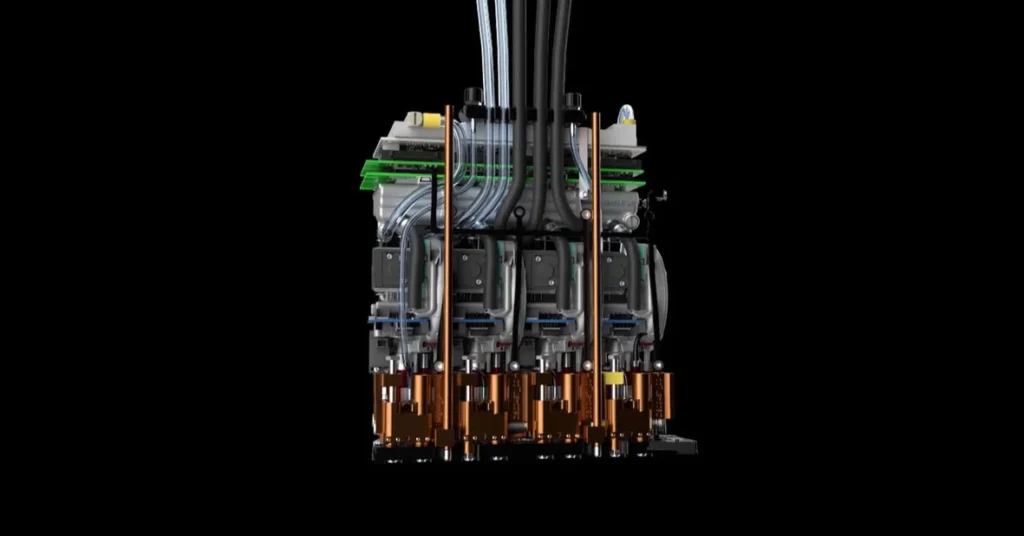The Sauber Group is most well-known for its decades of work in motorsports racing, where it has won numerous races in numerous competitions. As with every other racing company, it began adopting additive manufacturing (AM) when it realized that the technology could aid in the production of unique components with quick turnaround, giving it an edge in the fast-paced world of F1. However, through its Sauber Technologies subsidiary, the firm has introduced its novel engineering to industry at large, producing 100-150 3D printed part sets daily, of which 80-90% are for wind tunnel testing.
The latest demonstration of this business strategy is a partnership with Swiss printing equipment manufacturer BOBST. The two Swiss firms have signed a multi-year strategic agreement in which Sauber will supply 3D printed parts, engineering, and development for BOBST’s inkjet label presses. Specifically, Sauber will be making components for a proprietary piece of BOBST technology called the 3D printed Cluster, used in digital printing for packaging machine manufacturing.
The Cluster bundles all ink management, electronics, and mechanics with the printheads to create a single scalable unit that can be adapted for any substrate or application. Though Sauber relies on Additive Industries for its metal 3D printing operations, it recently signed a deal with EOS for polymers. From the information available, it’s difficult to determine which will be used to manufacture for BOBST.
“With the largest and most modern additive manufacturing facility in Switzerland, Sauber Technologies is dedicated to the development of high-end additive manufacturing for the widest spectrum of industries, whether that is F1 racing, energy supply, or industrial label manufacturing. We see this agreement as the beginning of a fruitful partnership and look forward to supporting BOBST in elevating its printing equipment to the next level,” said Jonathan Herzog, Chief Commercial Officer of Sauber Technologies.
“With its expertise and leading 3D manufacturing technology, Sauber Technologies is known for always pushing the boundaries of innovation and this makes the company the perfect engineering partner for BOBST. As technology leaders in our respective fields, there is a great synergy between our two companies, and we are excited to implement F1 TM technology into our inkjet engines in what will undoubtedly secure our place at the top of the podium and keep us there going forward,” said Léonard Badet, Head of Group Technology at BOBST.
It’s interesting to note Herzog’s lumping together of racing, energy, and label manufacturing. While seemingly disparate, racing and energy are actually quite intertwined, given the amount of fuel an F1 car requires. In the midst of an energy crisis brought to global awareness by the war in Ukraine, but more closely linked to the actual finite supply of fossil fuels on the planet, one would think that far too much energy is spent on the frivolity of motorsports. However, when one thinks of F1 as a testing ground for high-performance technologies, companies like Sauber are able to experiment with 3D printing and vehicle design in a strictly measured environment.
Additive Industries’ MetalFAB 3D printer at Sauber facilities. Image courtesy of Sauber Technologies.
The data from the racing lab can then be carried over to “real world” of automobiles. After all, Audi recently became a minority shareholder in the Sauber Group and its parent company, Volkswagen, is integrating AM into its street-legal vehicles at an increasing rate. Additionally, as Sauber Technologies demonstrates, what’s learned in automotive can be ported to other industries, such as manufacturing for industrial applications like those of BOBST or for the energy sector, where every bit of increased performance translates into as much of a winning strategy as it does in racing. That may be why Divergent is beginning its commercialization journey with vehicles, but will likely see its 3D printing platform applied to many other sectors.
Therefore, it should be less of a surprise that there is so much 3D printing going on in racing. In the end, it may be less about time savings on the track and more about energy savings around the world. For the general industry and tooling segment, AM is expected to generate $5.48 billion by 2029, according to the Market Opportunities for Additive Manufacturing in the General Industry and Tooling Sector 2020-2029 report from SmarTech Analysis. Where AM may fit beyond the industrial equipment component of label making to tie those three industries together could be the 3D printing of smart labels using embedded sensors. More on that, however, has yet to be fully revealed.
Feature image courtesy of BOBST.
